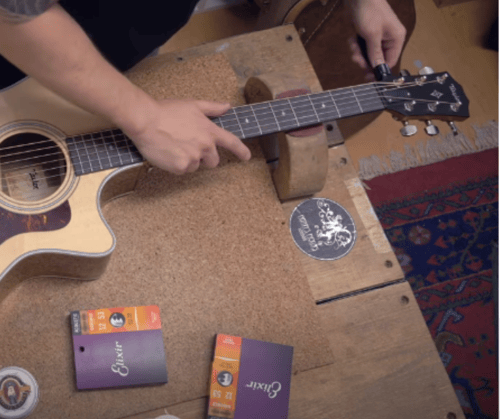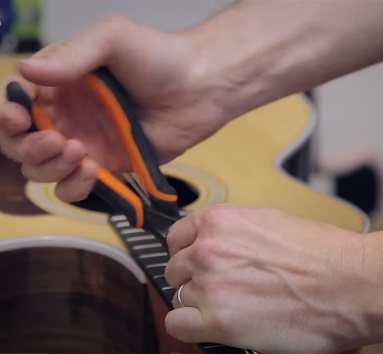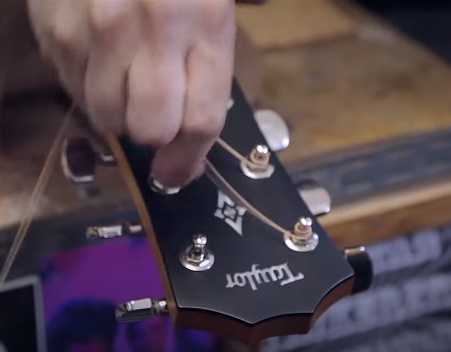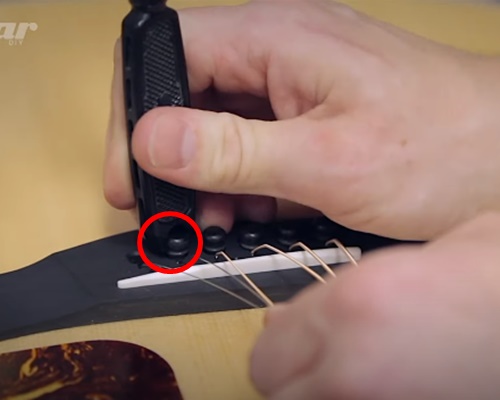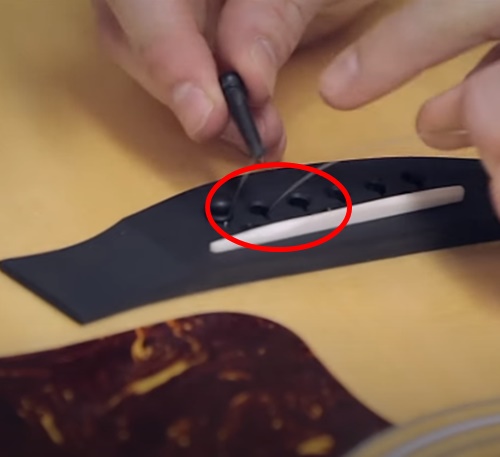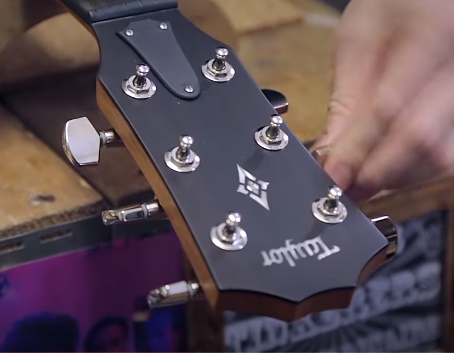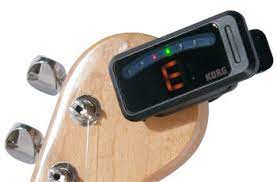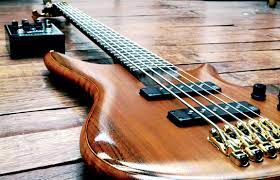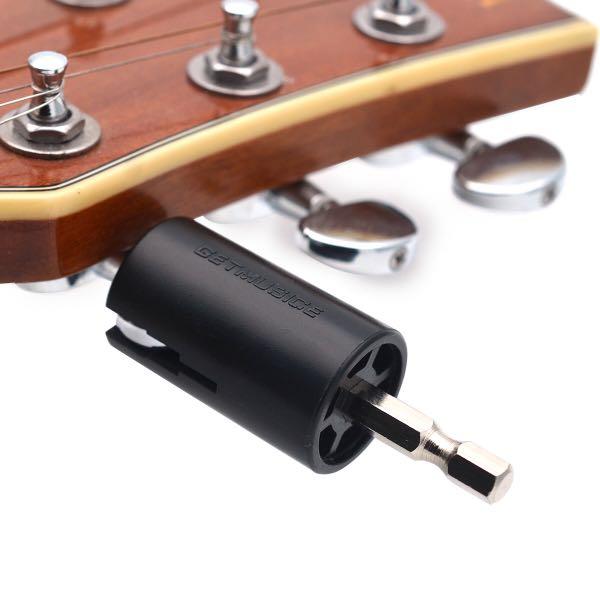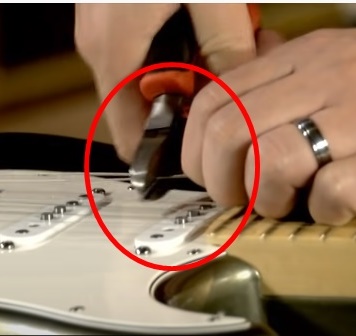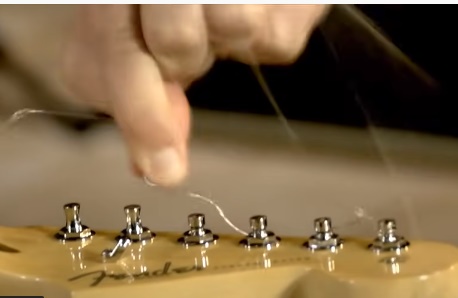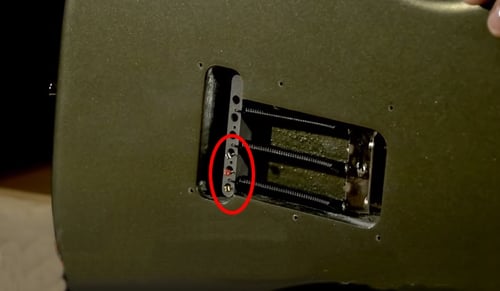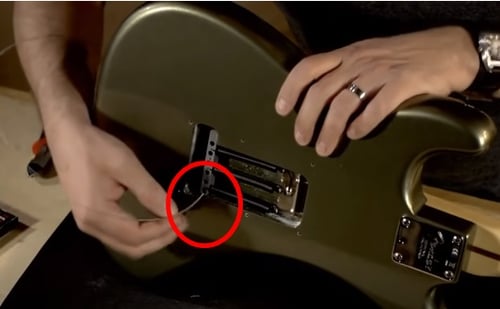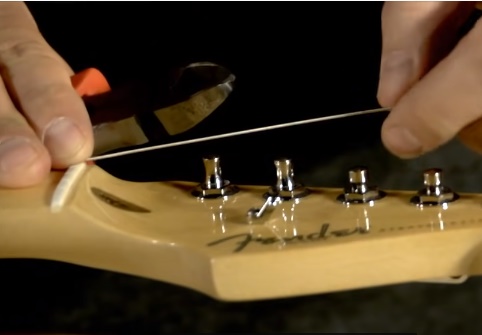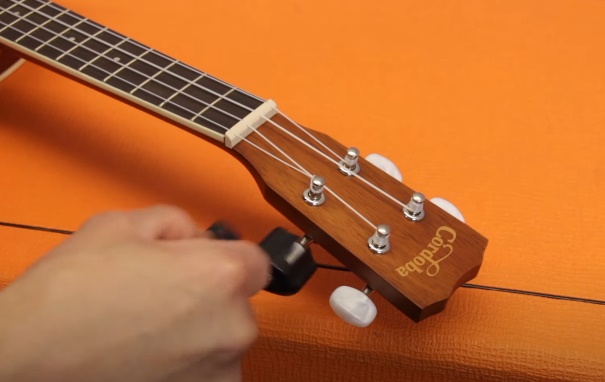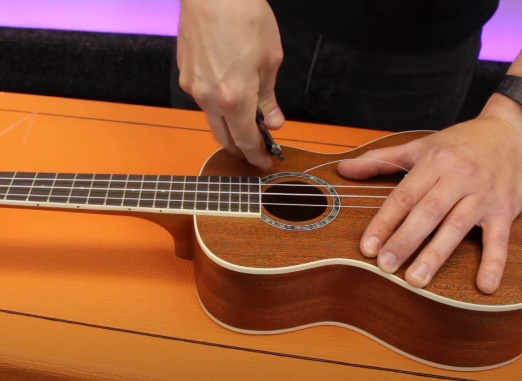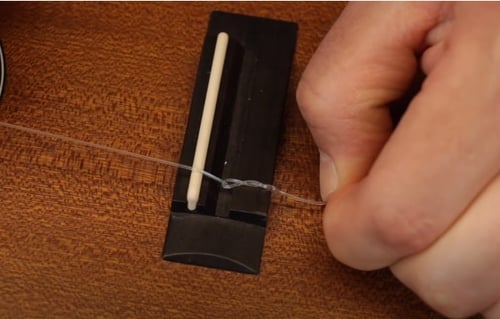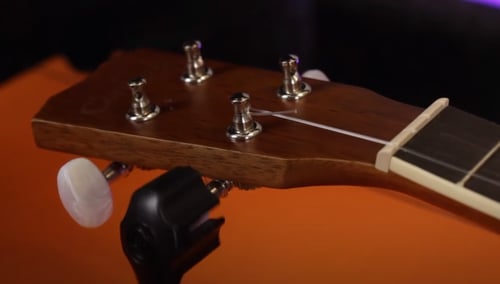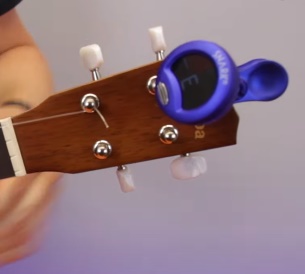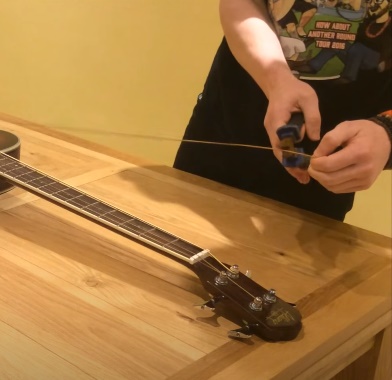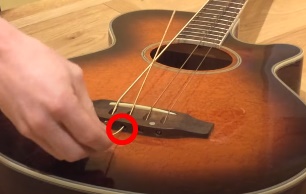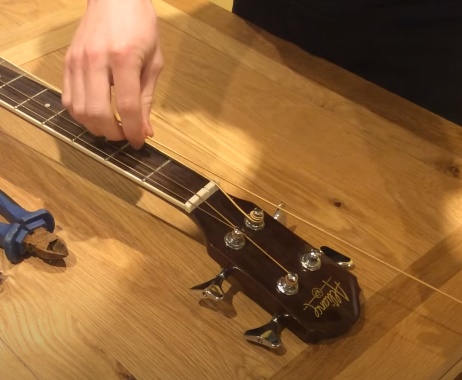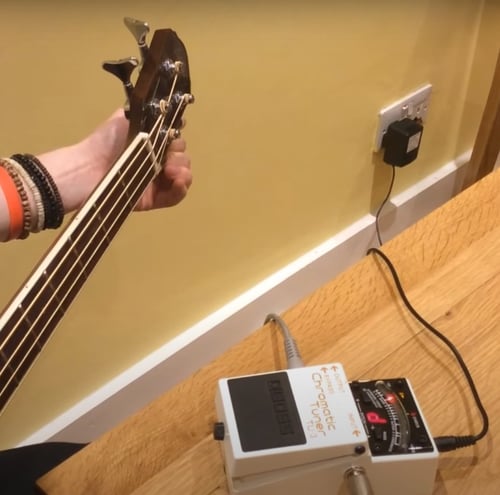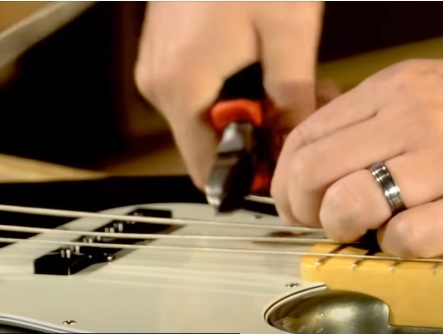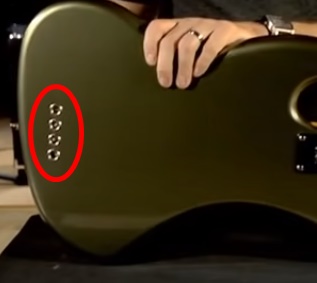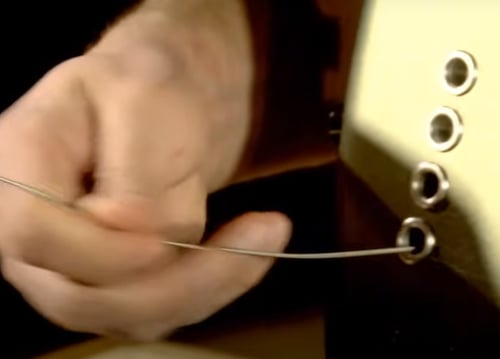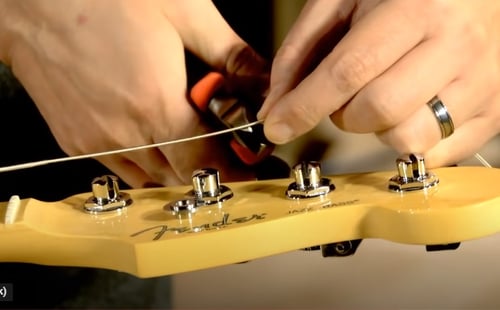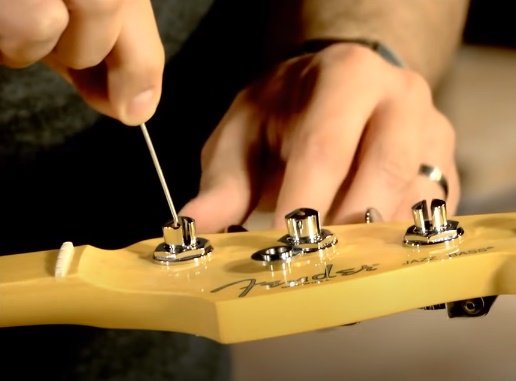Restringing a guitar means that it applies to all types of guitars including electric guitar, acoustic, ukulele, and bass guitar but slightly differs in some features. There are a lot of things to discuss before we move on to our main topic.
| Jump Into Section |
How To Restring a Guitar, Ukulele, and Bass |

3 Reasons to Change Guitar Strings: |
|
|
1. Aging & rusty strings |
|
Nobody likes rusty old strings. They are not comfortable and hurt your fingers.
|
|
|
2. Broken Strings |
|
Hitting those fast and high rock-star notes just broke your strings by accident!
|
|
|
3. Trying new strings! |
|
Guitar users buy new set of strings because of its texture, color and sound. Strumming rainbow strings gives a blended color.
|
7 Restringing Tools You'll Need: |
New Set of Guitar Strings
|
Guitar String Winder |
Guitar String Cutter(Guitar String Cutters on Amazon) |
Guitar Pliers |
Guitar Spray Cleaner(Guitar Spray Cleaner on Amazon)
|
Guitar Cleaning Cloth(Guitar cleaning cloth on Amazon)
|
Guitar Tuner
|
How to Restring an Acoustic Guitar |
1. Ready your strings |
|
Ideal strings:
|
|
|
2. Loosen the Strings |
|
Lay down your acoustic guitar on flat surfaces like the floor, tables, and even your lap. Loosen the guitar strings using the Guitar Winder
|
3. Cut the old strings |
|
Don't pull anything yet, cut the old strings in the middle.
|
4. Pull out strings from tuning pegs |
|
Pull out from the pegs only and not from the bridge pins yet.
|
5. Remove bridge pins and remove strings |
|
There are no bridge pins on the electric guitar. So we will pull the strings out at the back of the guitar. It looks like a battery container but it has holes where the strings are.
|
|
|
6. Clean your acoustic guitar |
|
It's important to clean your guitar first before adding the strings so you can clean it entirely.
|
|
|
7. Insert new strings in the bridge holes |
|
|
|
|
8. Insert in the tuning pegs and secure it |
|
Make sure that all the holes are facing down the neck, Insert them in the tuning pegs. Twist and secure them tightly to have a stronghold. Do it with the rest of the strings. Secure with Guitar winder
|
|
|
9. Use the Guitar Tuner |
|
The guitar tuning patterns are E2–A2–D3–G3–B3–E4. Using a guitar tuner is faster and more reliable.
|
|
People also read: |
How to Restring an Electric Guitar |
1. Ready your strings |
|
Ideal types:
|
2. Position your Electric Guitar |
|
Just like the acoustic guitar, lay down your electric guitar on flat surfaces like the floor, tables, and even your lap. |
3. Loosen and Remove the Strings |
|
Loosen the guitar strings first using the Guitar Winder and remove the strings.
|
4. Cut the old strings before pulling out |
|
Using the Guitar String Cutter, immediately cut the old strings one by one
|
5. Unwind the old strings |
|
Reverse twist them to remove the old string from the tuning pegs
|
6. Pull the other old strings |
|
There are no bridge pins on the electric guitar. So we will pull the strings out at the back of the guitar. It looks like a battery container but it has holes where the strings are.
|
7. Clean Acoustic Guitar |
|
Wipe your guitar with Cleaning Spray and Cloth. It's important to clean your guitar first before adding the strings so you can clean it entirely.
|
8. Insert new strings |
|
Prepare the new strings, and insert them one by one in the holes at the back of the guitar.
|
9. Insert new strings in the tuning pegs |
|
Same with the acoustic guitar, insert them in the tuning pegs. Twist and secure them tightly to have a strong hold. Do it with the rest of the strings.
|
10. Cut the excess guitar strings |
|
Guitar strings are bought in long length. Cut the excess length to make it comfortable to use. Do it with the rest of the strings
|
11. Use the Guitar Tuner |
|
The guitar tuning patterns are E2–A2–D3–G3–B3–E4. Using a guitar tuner is faster and more reliable.
|
|
People also read: |
How to Restring a Ukulele |
1. Choose your set of strings |
|
It has 5 types of strings:
|
2. Loosen and Remove the Strings |
|
Loosening the ukulele strings is the easiest because of its small size. Use the guitar unwinder and remove the strings.
|
3. Cut the old strings and remove them |
|
Using the Guitar String Cutter, cut the strings to save time. You can already remove the strings because they do not have bridge pins. |
4. Clean Ukulele |
|
Wipe your guitar with Cleaning Spray and Cloth. It's important to clean your guitar first before adding the strings so you can clean it entirely.
|
5. Insert new strings and tied them |
|
Because they do not have bridge pins like the acoustic guitar, we can just tie the strings like this and it will be secured in place.
|
6. Insert the strings in the tuning pegs |
|
Insert the string in the tuning pegs and use the guitar winder. Also cut the excess length of strings.
|
7. Use a Ukulele Tuner |
|
The Ukulele pattern is G-C-E-A. Use the Ukulele Tuner to help you get the right pitch.
|
|
People also read: |
How to Restring an Acoustic Bass |
1. Choose your acoustic bass strings |
|
Acoustic Bass has 4 types of strings:
|
2. Loosen your Acoustic Bass strings |
|
Acoustic Bass are similar to Acoustic guitars but differs with the number of strings and the string types. Like in Acoustic guitar, loosen the strings of your acoustic bass with guitar winder
|
3. Cut the old strings and remove them |
|
Using the Guitar String Cutter, cut the strings to save time. You can already remove the strings because they do not have bridge pins. |
4. Wipe your guitar with Cleaning Spray and Cloth |
|
It's important to clean your guitar first before adding the strings so you can clean it entirely.
|
5. Insert new strings at the side of the bridge area. |
|
Acoustic basses do not have Bridge Pins like acoustic guitars. So we insert the new string in this Bridge area.
|
6. Insert new strings in tuning pegs |
|
Insert acoustic bass strings in the tuning pegs. Use the Guitar winder to secure the strings and cut the excessive length of the strings.
|
7. Use a Bass Tuner |
|
The bass tuning pattern is E1–A1–D2–G2. Use the bass tuner to have a correct pattern
|
|
People also read: |
How to Restring an Electric Bass |
1. Choose your acoustic bass strings |
|
Electric bass has 3 types of strings:
|
2. Loosen the strings |
|
Loosen the strings with your guitar winder.
|
3. Remove old strings from tuning pegs |
|
Using the Guitar String Cutter, cut the strings to save time. You can already remove the old strings from the tuning pegs. |
4. Remove the old strings |
|
This is what the back of the electric bass looks like. They are just holes. They are not like the battery-like appearance of the electric guitar. Pull the old strings from this area.
|
5. Cleaning with Spray and Cloth |
|
It's important to clean your guitar first before adding the strings so you can clean it entirely. Wipe your guitar with spray and cloth
|
6. Prepare your new strings |
|
Prepare your new strings and insert them at the back of the electric bass.
|
7. Cut the excessive length |
|
Insert acoustic bass strings in the tuning pegs. Use the Guitar winder to secure the strings and cut the excessive length of the strings.
|
8. Insert in Tuning Peg and use a Guitar Winder |
|
Insert string inside the tuning peg and then use a Guitar Winder to twist and secure everything in place
|
9) Tune your electric bass |
|
The bass tuning pattern is E1–A1–D2–G2. The a bass tuner to help you get the accurate sound
|


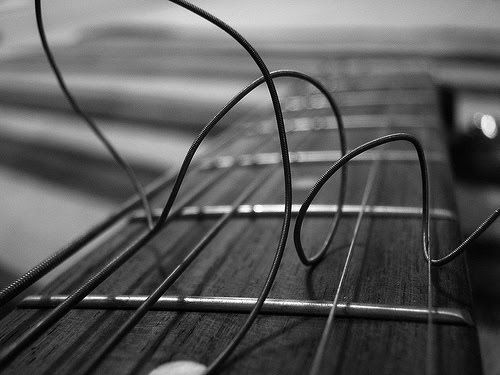
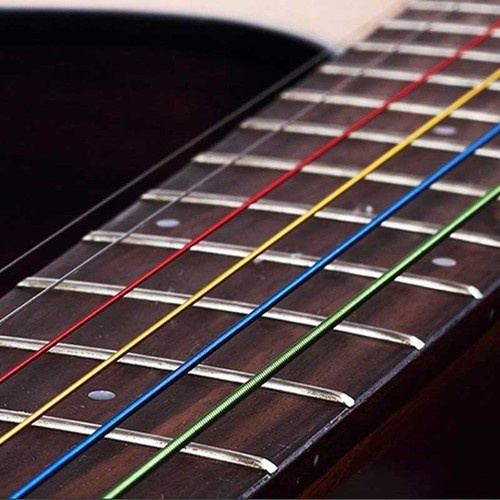

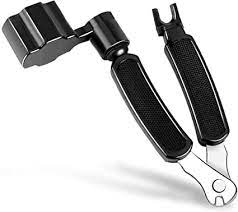

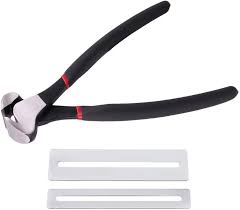



![Top 5 Acoustic Guitar Strings: Best Wires [2020] | Equipboard](https://images.equipboard.com/blog_content/acoustic-guitar-strings.jpg)
